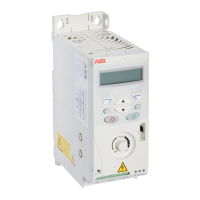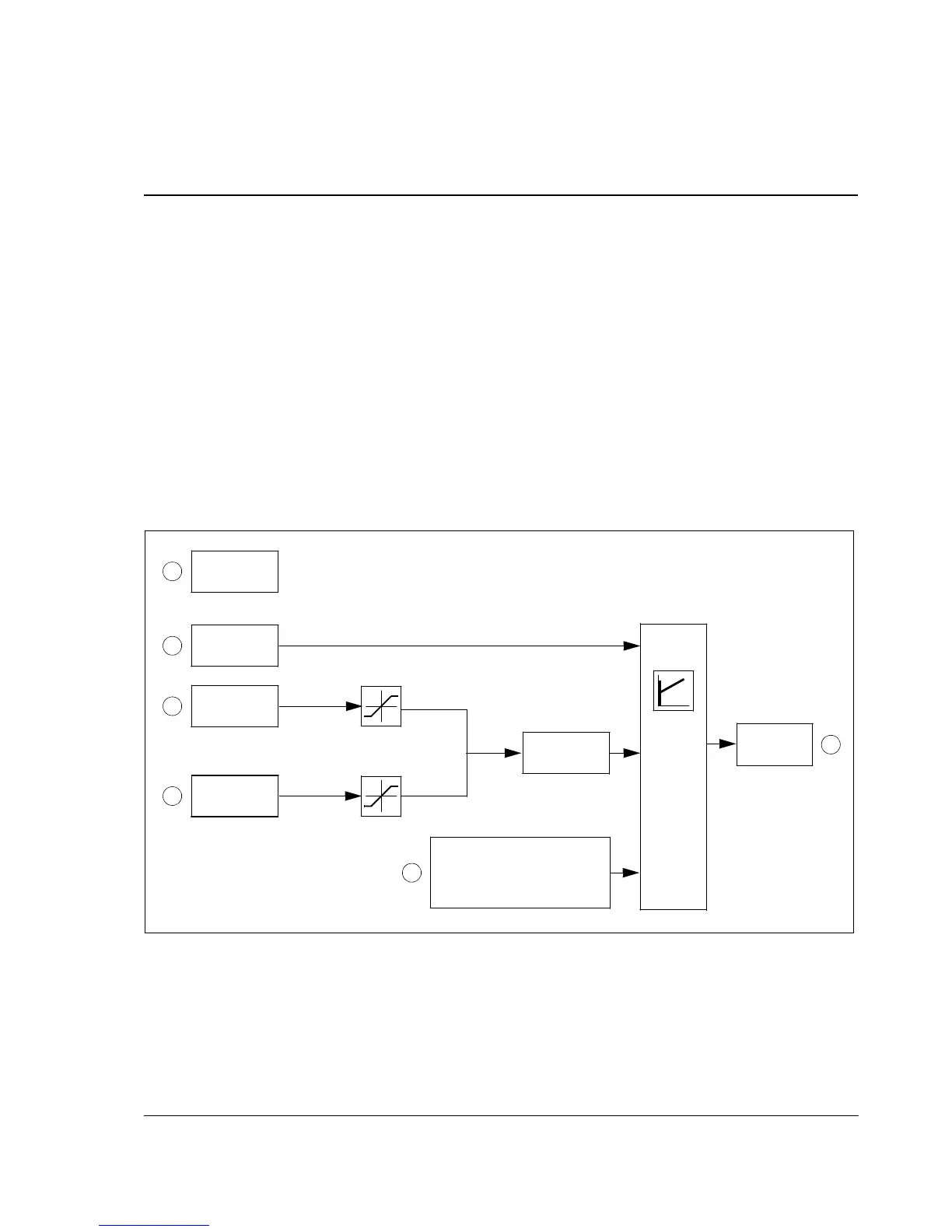Appendix: Process PID control
What this chapter contains
The chapter contains instructions on quick configuration of the process control, gives
an application example and describes the PID sleep functionality.
Process PID control
There is a built-in PID controller in the drive. The controller can be used to control
process variables such as pressure, flow or fluid level. In process PID control, a
process reference (setpoint) is set with drive's integrated potentiometer. An actual
value (process feedback) is connected to the drive's analog input. The process PID
control adjusts the drive speed in order to keep the measured process quantity
(actual value) at the desired level (setpoint).
Quick configuration of process PID control
9902 APPLIC
1
MACRO
4010 SET
2
POINT SEL
Process
PID
4018 ACT1
MINUMUM
4016 ACT1
3
INPUT
4019 ACT1 MAXIMUM
4019 AC
T1
MAXIMUM
4017 ACT2
4
INPUT
4018 ACT1 MINIMUM
4021 ACT2 MAXIMUM
4020 ACT2 MINUMUM
4001 GAIN
4014 FBK
SEL
PID output
6
4002 INTEGRATION
TI
ME
5
4003 DERIVATION
TIME
4005 ERROR VALUE
INV
1. 9902 APPLIC MACRO: Set 9902 APPLICATION MACRO to 6 (PID CONTROL).
2. 4010 SET POINT SEL: Determine the source for the PID reference signal (PID
setpoint) and define its scale (4006 UNITS, 4007 UNIT SCALE).
3. 4014 FBK SEL and 4016 ACT1 INPUT: Select the process actual value
(feedback signal) for the system and configure feedback levels (4018 ACT1
MINUMUM, 4019 ACT1 MAXIMUM).

